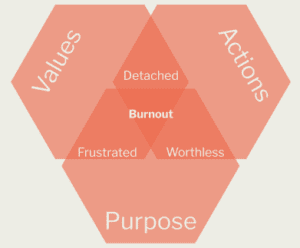
Overcoming Fear in the Workplace: Strategies for a Healthy Environment
In today’s dynamic and fast-paced work environments, fear can be an insidious issue that affects both employees and organisations. It can stifle creativity, hinder collaboration, and ultimately undermine the productivity and well-being of individuals. Creating a culture of trust and safety is essential for fostering a healthy workplace, but it’s not always easy. In this blog, we’ll explore the concept of fear in the workplace, the importance of building a positive workplace culture, and the role of training in tackling toxic work cultures. Let’s dive in.
1. Understanding Fear in the Workplace
The workplace is where most adults spend a significant portion of their lives, and it’s essential that it’s a space where people feel secure, respected, and valued. However, fear in the workplace can manifest in various ways, such as:
a) Fear of Retaliation
One common fear among employees is the fear of retaliation. This can stem from concerns about reporting unethical behaviour or wrongdoing, whether it involves a coworker, supervisor, or even higher-ups. Employees may worry about facing consequences for speaking up, which can lead to a culture of silence and inaction.
b) Fear of Failure
Fear of failure is another significant source of anxiety in the workplace. Employees may worry about making mistakes or not meeting their targets, which can paralyse them, hinder their professional growth, and prevent them from taking necessary risks to innovate and grow.
c) Fear of Discrimination
Discrimination in any form is detrimental to the workplace environment. Employees may fear being discriminated against based on their race, gender, age, or other factors. This fear can prevent employees from being their authentic selves and hinder their career advancement.
d) Fear of Job Insecurity
The fear of job insecurity is a prevalent concern, especially in today’s uncertain economic climate. Employees may worry about layoffs, downsizing, or their positions becoming obsolete. This fear can lead to chronic stress and decreased job satisfaction.
Understanding these various aspects of fear is the first step in addressing them. Now, let’s explore how building a positive workplace culture can help mitigate these fears.
2. Building a Positive Workplace Culture
Creating a positive workplace culture is essential for fostering an environment where fear has no room to thrive. Here are some strategies to build such a culture:
a) Open Communication
Encourage open and honest communication at all levels of the organisation. Employees should feel comfortable sharing their concerns, ideas, and feedback without the fear of repercussions. Establishing channels for anonymous reporting can also be valuable in addressing sensitive issues.
b) Lead by Example
Leaders play a pivotal role in setting the tone for workplace culture. They should exemplify the behaviour and values they want to see in their teams. Leaders who prioritise respect, empathy, and fairness are more likely to create a culture where employees feel safe.
c) Employee Recognition
Recognise and reward employees for their achievements and contributions. Feeling appreciated and valued boosts morale and reduces the fear of job insecurity. Implementing regular performance evaluations and feedback sessions can also provide clarity on job expectations.
d) Training and Development
Invest in training and development programs that empower employees to acquire new skills and grow professionally. When employees feel that their company supports their career progression, they are less likely to fear failure.
Creating a positive workplace culture is an ongoing process that requires commitment from all levels of the organisation. Now, let’s delve into the role of training in addressing toxic work cultures.
3. Training for Toxic Work Cultures
Toxic work cultures are often characterised by a lack of trust, high turnover, and low morale. Training can be a powerful tool in turning the tide and transforming a toxic culture into a healthy one. Here’s how:
a) Diversity and Inclusion Training
Diversity and inclusion training can help combat discrimination and bias in the workplace. This type of training raises awareness about unconscious biases and fosters an inclusive environment where all employees feel respected and valued.
b) Conflict Resolution Training
Conflicts are a natural part of any workplace, but when left unaddressed, they can fester and contribute to a toxic culture. Conflict resolution training equips employees with the skills to manage conflicts constructively, reducing the fear of retaliation.
c) Leadership Development
Leadership development programs can help supervisors and managers become better leaders. Training in effective communication, conflict resolution, and empathy can transform authoritarian leadership styles into ones that promote trust and collaboration.
d) Emotional Intelligence Training
Emotional intelligence training can improve the way employees and leaders handle their emotions and interact with others. This can lead to more empathetic and supportive work environments, reducing the fear of criticism or humiliation.
Training is not a one-time event but an ongoing process. By investing in training programs that address the root causes of toxic cultures, organisations can create lasting positive change.
4. Promoting Psychological Safety
Psychological safety is a critical component of any workplace striving to overcome fear and create a healthy environment. It refers to an atmosphere where employees feel comfortable taking risks, sharing their thoughts, and being vulnerable without the fear of negative consequences. Here’s how to promote psychological safety:
a) Encourage Risk-Taking
When employees feel safe taking calculated risks, they are more likely to innovate and contribute positively to the organisation. Encourage experimentation and acknowledge that not every endeavor will succeed. Emphasise learning from failures rather than punishing them.
b) Foster Inclusivity
Inclusive workplaces value diversity of thought, background, and perspective. Promote inclusivity by actively seeking diverse voices and opinions. Ensure that all employees have a seat at the table and are given opportunities to contribute.
c) Listen Actively
Effective listening is a key component of psychological safety. When employees feel heard and understood, they are more likely to express themselves openly. Encourage active listening among colleagues, leaders, and teams.
d) Constructive Feedback
Provide feedback that is specific, actionable, and delivered in a supportive manner. Constructive feedback helps employees improve their performance without instilling fear. It should focus on development rather than criticism.
5. The Role of Leadership in Fostering a Fear-Free Environment
Leaders play a pivotal role in shaping workplace culture. Their actions and decisions can either reinforce fear or create an environment of trust and safety. Here are some ways leaders can contribute to a fear-free workplace:
a) Lead with Empathy
Empathetic leaders understand the emotions and perspectives of their team members. They create an atmosphere where employees feel valued and supported, reducing the fear of criticism or humiliation.
b) Set Clear Expectations
Unclear expectations can lead to anxiety and fear of failure. Leaders should set clear, achievable goals and communicate them effectively to their teams. When employees understand what is expected of them, they are more likely to perform well.
c) Address Issues Promptly
Leaders should address workplace issues, conflicts, and concerns promptly and impartially. Ignoring or delaying resolution can lead to a toxic environment where fear thrives.
d) Be Transparent
Transparency is crucial in building trust. Leaders should be open about organisational changes, challenges, and decisions. When employees are kept informed, they are less likely to fear the unknown.
6. Developing Resilience and Coping Strategies
In a fast-paced work environment, it’s essential for employees to develop resilience and coping strategies to deal with fear and stress. Here are some ways individuals can build resilience:
a) Self-Care
Encourage employees to prioritise self-care by getting adequate sleep, maintaining a healthy work-life balance, and engaging in activities that promote physical and mental well-being.
b) Mindfulness and Stress Management
Offer mindfulness and stress management programs to help employees manage anxiety and stress effectively. These techniques can improve emotional well-being and reduce fear.
c) Seek Support
Create a culture where employees feel comfortable seeking support when needed. This can include access to counseling services, employee assistance programs, or peer support networks.
d) Continuous Learning
Promote a growth mindset among employees by encouraging continuous learning and development. When employees are confident in their skills and abilities, they are less likely to succumb to fear.
Overcoming fear in the workplace is an ongoing process that requires commitment, effort, and a collective approach. By understanding the different aspects of fear, fostering a positive workplace culture, investing in training, promoting psychological safety, and exhibiting leadership that values trust and empathy, organisations can create an environment where fear has no place, and employees can thrive.
7. Building Trust and Fostering Collaboration
In a workplace free of fear, trust and collaboration are foundational. These elements not only create a positive atmosphere but also enhance productivity and innovation. Here are strategies to build trust and foster collaboration:
a) Trust-Building Activities
Organise team-building activities and workshops that promote trust among employees. Activities that encourage open communication, problem-solving, and reliance on each other can be highly effective.
b) Cross-Functional Teams
Encourage cross-functional collaboration by forming teams with members from different departments. This exposes employees to diverse perspectives and helps break down silos, reducing the fear of isolation.
c) Recognition and Rewards
Recognise and reward collaboration and teamwork. Highlighting successful collaborative efforts reinforces the importance of working together towards common goals.
d) Conflict Resolution Mechanisms
Establish clear conflict resolution mechanisms that address disputes fairly and promptly. Knowing that conflicts will be resolved fairly reduces the fear of unresolved tension.
8. The Long-Term Benefits of a Fear-Free Environment
Creating a workplace free of fear offers numerous long-term benefits for both employees and organizations:
a) Improved Employee Well-Being
A fear-free environment reduces stress and anxiety among employees, leading to better overall well-being. This, in turn, results in improved physical and mental health.
b) Increased Productivity and Innovation
Employees who feel safe and empowered are more likely to be creative and take calculated risks. This can lead to increased productivity and innovation, benefiting the organisation.
c) Enhanced Employee Retention
A positive workplace culture that prioritises trust and safety can reduce turnover rates. Employees are more likely to stay with an organisation where they feel valued and supported.
d) Reputation and Attraction
Organisations known for their healthy workplace culture are more attractive to top talent. A positive reputation can help in recruiting and retaining skilled professionals.
e) Sustainable Growth
A fear-free environment contributes to the long-term sustainability of an organisation. It fosters a culture of continuous improvement, adaptability, and resilience.
In conclusion, overcoming fear in the workplace is not only a moral imperative but also a strategic one. By addressing fear through open communication, trust-building, leadership, and resilience, organisations can create a healthy environment where employees thrive and contribute to the long-term success of the company.
9. Implementing Strategies in Your Workplace
Now that we’ve explored various strategies and case studies, it’s time to consider how to implement these changes in your workplace. Here are some actionable steps:
a) Conduct a Workplace Assessment
Begin by assessing your workplace’s current culture. Surveys, focus groups, and one-on-one discussions can provide valuable insights into the specific challenges your organisation faces.
b) Develop a Clear Strategy
Based on your assessment, create a clear strategy for transforming your workplace culture. Set specific goals, identify key areas for improvement, and outline actionable steps.
c) Provide Training and Resources
Invest in training programs that address the specific needs of your organisation. This may include diversity and inclusion training, conflict resolution workshops, or leadership development programs.
d) Communicate the Vision
Leaders should communicate the vision for the desired workplace culture clearly and consistently. Explain why these changes are essential and how they align with the organisation’s values and goals.
e) Monitor Progress and Adapt
Regularly assess the progress of your culture transformation efforts. Be open to feedback, adjust strategies as needed, and celebrate successes along the way.
10. Conclusion
Overcoming fear in the workplace is not a one-time project but an ongoing commitment to creating a healthy and productive environment. By understanding the various facets of fear, building a positive workplace culture, investing in training, promoting psychological safety, and exhibiting leadership that values trust and empathy, organisations can foster an environment where fear has no place.
Remember that change takes time, and the benefits of a fear-free workplace are worth the effort. As you embark on this journey, keep in mind the long-term benefits, learn from successful case studies, and take actionable steps to implement these strategies in your organisation. A fear-free workplace is not only good for employees’ well-being but also for the sustainability and success of your organisation.
Ready to conquer fear in your workplace and build a thriving culture? Contact The Hive today. We are a fearless training consultancy that provides training, coaching, and facilitation to enable leaders and their teams to drive change, create thriving working cultures, and accelerate business results for organisations invested in positive impact. Let’s work together to transform your workplace into a fearless and productive environment.













































